Many beliefs that email marketers hold true regarding email are simply false, according to research and analysis conducted by the email marketing agency, Alchemy Worx.
They have analyzed data sourced from their work with customers and industry figures to arrive at these conclusions.
Here are seven such email myths:
Myth 1. Consumers are drowning in emails from trusted brands
Figures from Alchemy Worx and the Direct Marketing Association’s Email Tracking Report show that around 40% of consumers who receive brand emails are getting no more than three per day, on average, and almost two-thirds (63%) receive no more than six. Research from Merkle also suggests that three-quarters (74%) of consumers prefer to receive commercial communications via email, which means that consumers prefer emails from brands over contact via any other channel
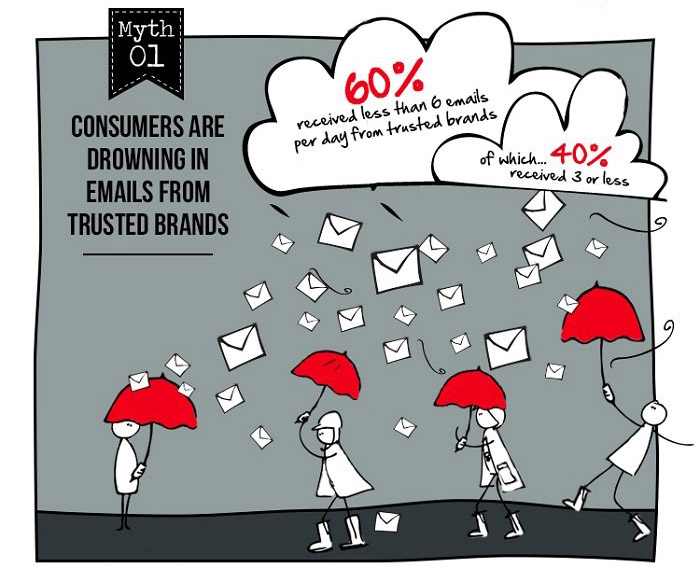
Myth 2. There is a best time to send emails, and it is 3 PM on Thursday
This myth assumes that consumers simply are waiting for a brand to email them, and that consumers act immediately on every email they receive. Data from Alchemy Worx shows that while 76% of email opens happen in the first two days, four out of five purchases (79%) take place after that two-day period. One-third (32%) of purchases take place more than two weeks after the consumer receives an offer email.
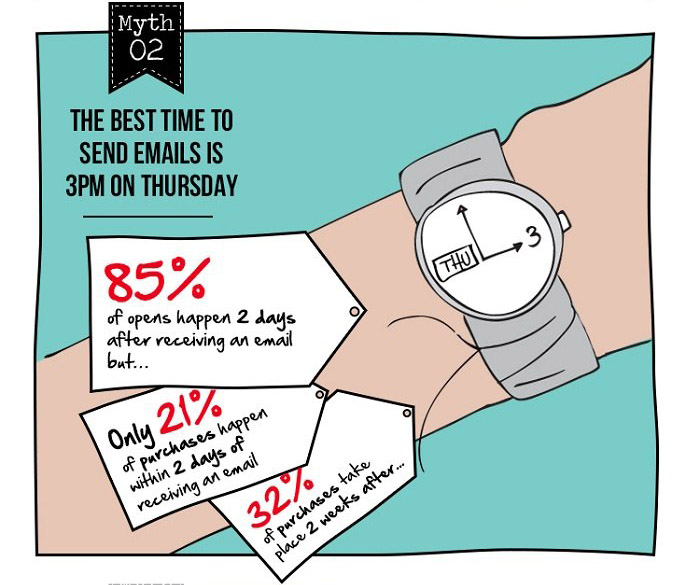
Myth 3. You should stop sending emails to inactive users after six months
According to figures from Alchemy Worx, 20% of a brand’s annual unique opens are from people who have been inactive for the first six months of the year. So, by not sending emails to users who are deemed inactive for just a year, brands are potentially missing out on one-fifth of their annual opens.
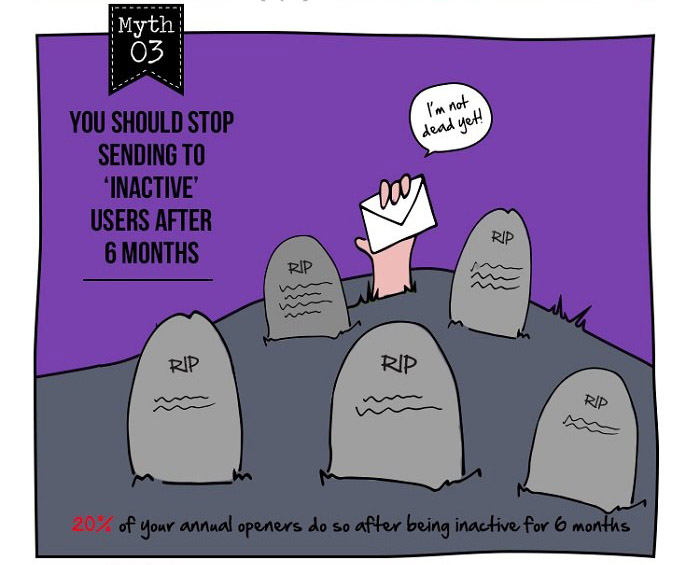
Myth 4. Consumers are trigger-happy with the spam button
In fact, according to data from Return Path, less than one subscriber in every 2,000 will mark an email as spam.
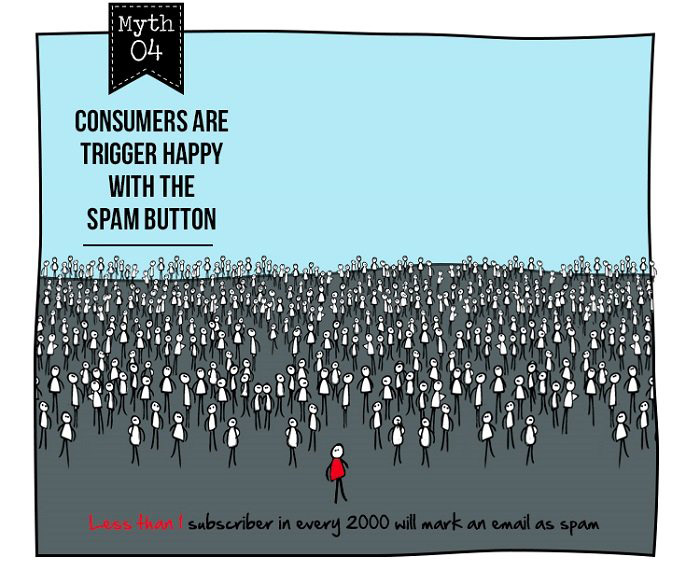
Myth 5. If brands send more email, consumers simply ignore more
Though it’s true that increasing send frequency tends to reduce the open and click rates for a given message, Alchemy Worx’s own customer data shows that over a three-month period, if a brand increases the number of emails it sends to consumers from one per month to four, doing so more than doubles the number of consumers opening one or more emails (from 10% to 24%). That increase in email volume also, on average, results in an additional 11% of revenue for the brand.
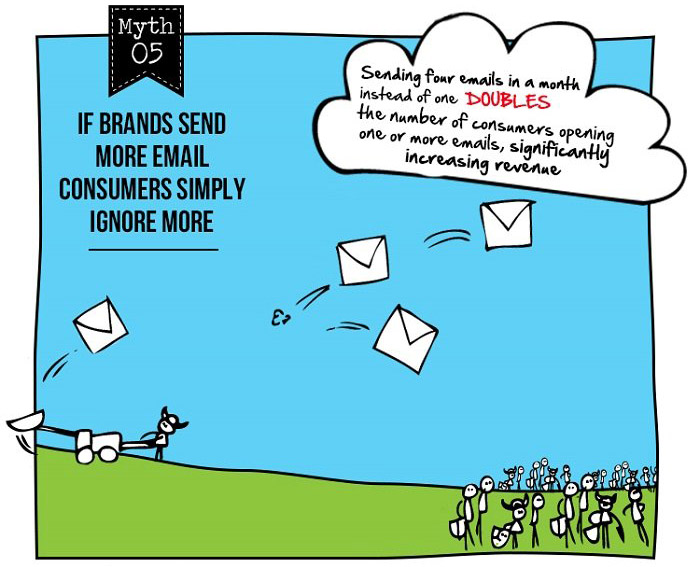
Myth 6. Short email subject lines give better results
Analysis of more than 200 million emails by Alchemy Worx highlights that short subject lines (fewer than 60 characters) will only help increase open rates. However, if brands want consumers to engage with emails—by opening and clicking on the content—then 70 characters or longer will be more successful. The longer the subject line, the more likely consumers are to click on the content within the email.
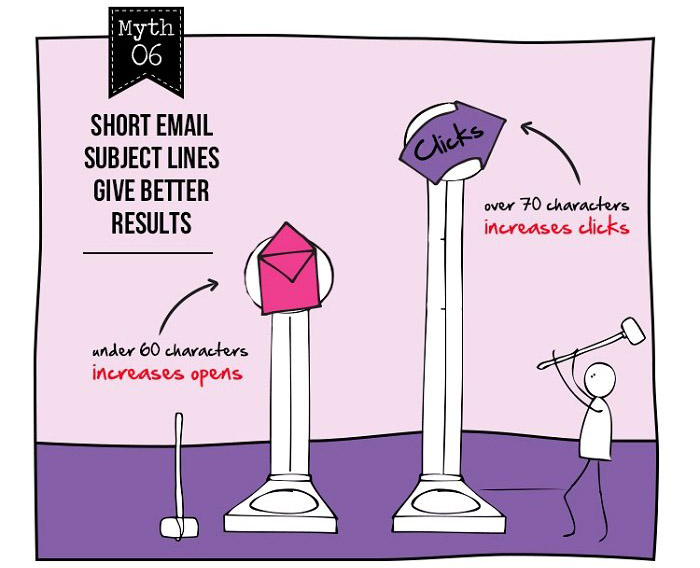
Myth 7. Emails end up in the spam folder because of the subject lines
Alchemy Worx analyzed data from eData Source of more than 200 clients and 540 billion sent emails, which shows that keywords often thought to ensure an email will end up in the junk folder actually have little or no effect. Whether an email ends up in a junk folder is more complicated than that, with the main reason being the sender’s reputation. And that is generally based on what information the mail filter or receiving ISP can gather about the sending habits of your IP address, rather than the contents of its subject line.
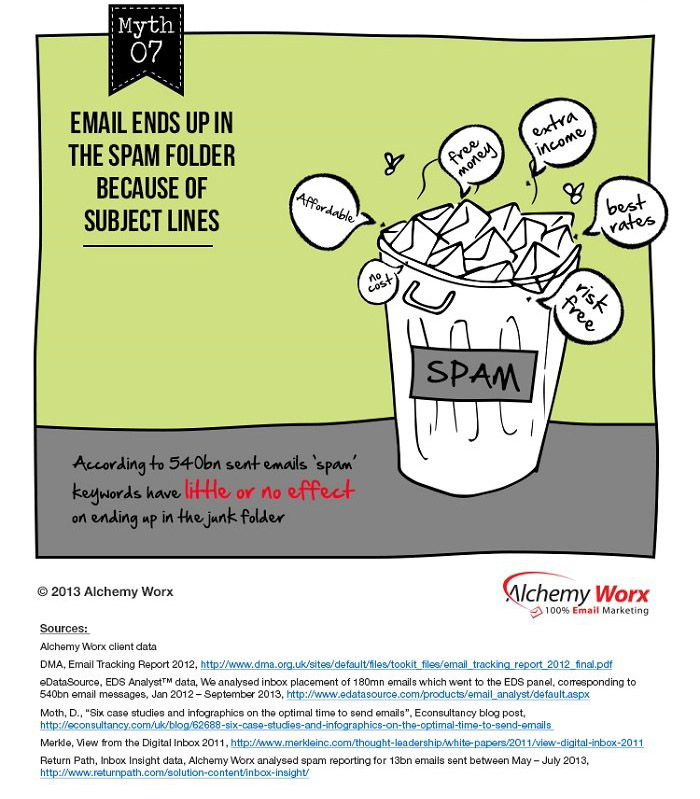
* * *
Email marketing has put up with these myths for long enough, and many of them are rooted in the belief that marketers must send the right message, to the right person, at the right time.
Marketers must move beyond the pursuit of the Holy Trinity (segmentation, timeliness and relevance) of email and no longer see email as simply a direct marketing tool. Instead, brands should see the benefits of email as a broadcast channel, allowing marketers to communicate a message to millions of subscribers regularly rather than sending less email, to less people, less often.
